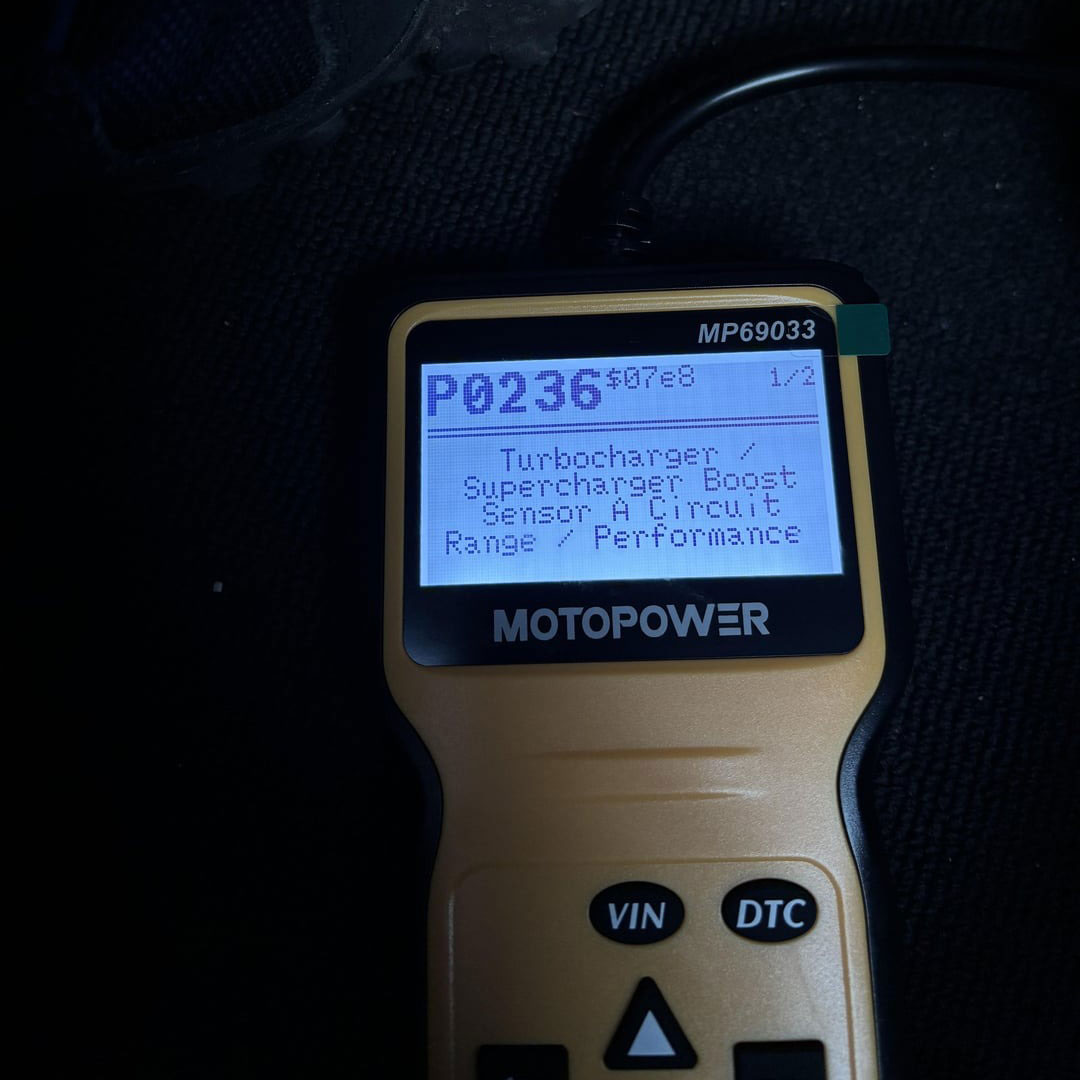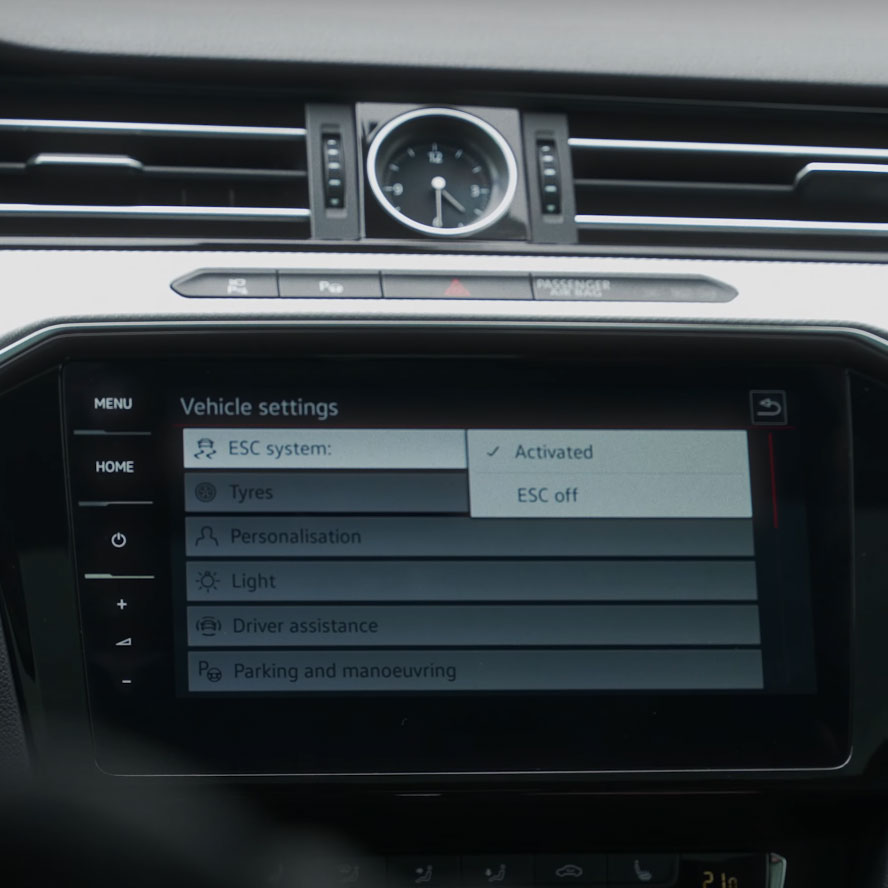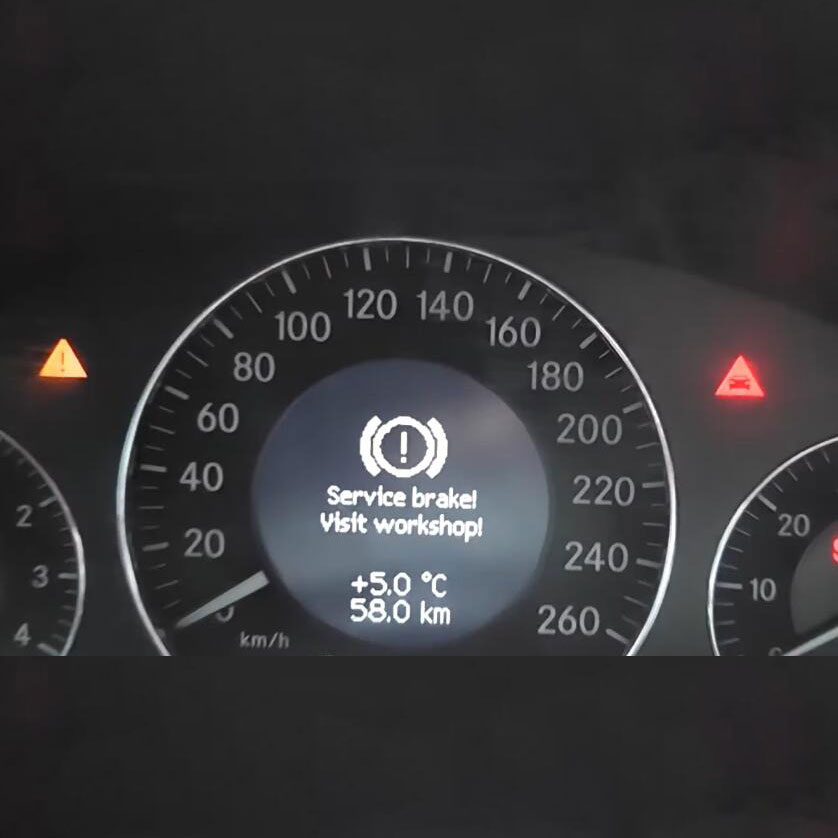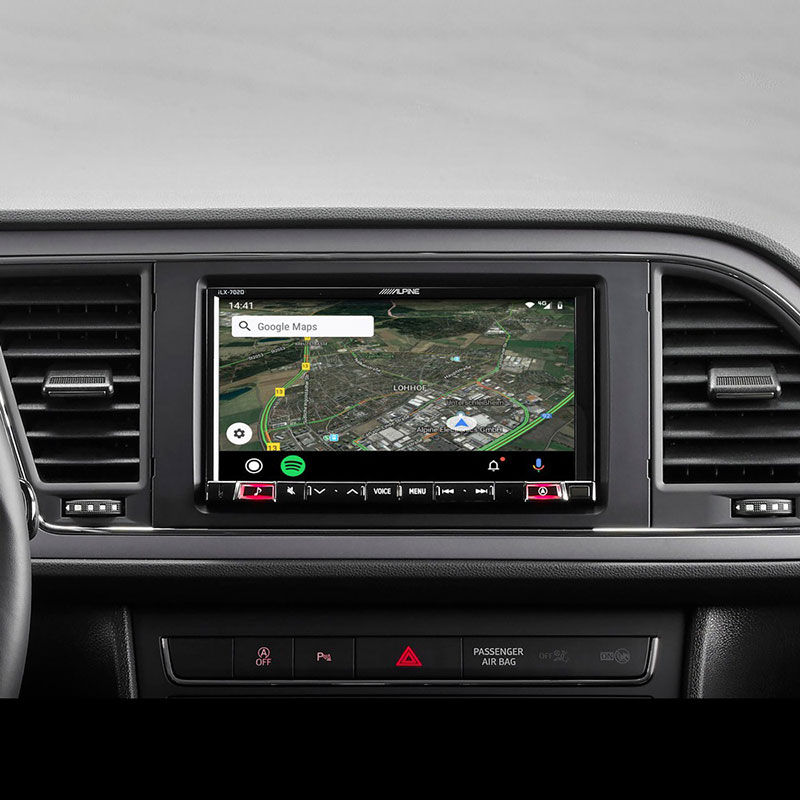
**What Does Audi DTC 02256 Indicate And How To Fix It?**
Contents
- 1. Understanding Audi DTC 02256: Quiescent Current Upper Limit Exceeded
- 1.1. What Does Quiescent Current Mean in Audi Vehicles?
- 1.2. How Does the CAN Gateway Relate to the DTC 02256 Error?
- 1.3. Common Symptoms Associated with the Audi DTC 02256 Error
- 1.4. Potential Causes Behind the DTC 02256 Error in Audi Vehicles
- 2. Step-by-Step Diagnostic Procedure for Audi DTC 02256
- 2.1. Preliminary Checks and Basic Troubleshooting
- 2.2. Using a Multimeter to Measure Quiescent Current
- 2.3. Identifying the Source of Parasitic Draw
- 2.4. Advanced Diagnostic Techniques
- 3. Repairing the DTC 02256 Error: Practical Solutions
- 3.1. Replacing Faulty Components
- 3.2. Addressing Wiring Issues
- 3.3. Resolving Aftermarket Accessory Problems
- 3.4. Software Updates and Recoding
- 3.5. Ensuring Proper Battery Management System (BMS) Functionality
- 4. Common Mistakes to Avoid When Diagnosing DTC 02256
- 5. How AutoExplain.com Can Help with Your Audi DTC 02256
- 6. Preventive Measures to Avoid Future Occurrences of DTC 02256
- 7. Real-World Case Studies: Resolving DTC 02256 in Audi Vehicles
- 7.1. Case Study 1: Faulty Aftermarket Alarm System
- 7.2. Case Study 2: Defective Body Control Module (BCM)
- 7.3. Case Study 3: Corroded Wiring Harness
- 8. Tools and Equipment Recommended for Diagnosing Audi DTC 02256
- 9. Expert Insights on Complex Electrical Issues in Audi Vehicles
- 10. Frequently Asked Questions (FAQ) About Audi DTC 02256
- 10.1. Can I drive my Audi with DTC 02256?
- 10.2. How long does it take to diagnose DTC 02256?
- 10.3. What is the typical repair cost for DTC 02256?
- 10.4. Can a faulty battery cause DTC 02256?
- 10.5. How often should I check my Audi’s electrical system?
- 10.6. Is it possible to fix DTC 02256 myself?
- 10.7. What are the long-term effects of ignoring DTC 02256?
- 10.8. Can aftermarket accessories trigger DTC 02256?
- 10.9. How can AutoExplain.com help me with DTC 02256?
- 10.10. What should I do if DTC 02256 returns after repair?
DTC 02256 in an Audi indicates a quiescent current issue, specifically that the upper limit has been exceeded, often intermittently. AutoExplain.com offers expert diagnostics, remote programming, and software installation to efficiently resolve such automotive issues. This article will provide detailed insights into diagnosing and fixing this error, ensuring your Audi operates optimally.
1. Understanding Audi DTC 02256: Quiescent Current Upper Limit Exceeded
The Audi DTC 02256 code signifies that the vehicle’s quiescent current, also known as the “resting current” or ” parasitic draw,” surpasses the permissible upper limit. This code is commonly triggered when the car’s electrical system continues to draw excessive power even when the ignition is turned off. The quiescent current should typically be low, allowing the battery to maintain its charge over extended periods of inactivity. When it exceeds the specified threshold, it can lead to battery drain, starting problems, and other electrical malfunctions. Quiescent current issues are complex and can stem from various sources. Identifying the root cause requires a systematic approach to electrical system diagnostics.
1.1. What Does Quiescent Current Mean in Audi Vehicles?
Quiescent current, also referred to as parasitic draw, signifies the electrical current consumed by a vehicle’s electronic control units (ECUs) and other electrical components when the engine is off and the vehicle is at rest. ECUs like the Engine Control Module (ECM), Transmission Control Module (TCM), Body Control Module (BCM), and Anti-lock Braking System (ABS) remain active to monitor sensors, maintain memory, and prepare for the next start-up. A typical quiescent current ranges from 20 to 80 milliamperes (mA). However, exceeding this range can deplete the battery, particularly if the vehicle remains inactive for an extended duration. Several factors can contribute to elevated quiescent current, including faulty ECUs, defective sensors, aftermarket accessories, or wiring issues.
1.2. How Does the CAN Gateway Relate to the DTC 02256 Error?
The Controller Area Network (CAN) gateway, often labeled as J533 in Audi diagnostic systems, serves as the central communication hub for all electronic control units (ECUs) within the vehicle. It manages and regulates data flow between different CAN bus systems, ensuring seamless communication among modules such as the engine control unit (ECU), transmission control unit (TCU), anti-lock braking system (ABS), and infotainment system.
When the CAN gateway detects an unusually high quiescent current, it records the diagnostic trouble code (DTC) 02256. This code indicates that one or more modules connected to the CAN bus are drawing excessive current while the vehicle is at rest. The CAN gateway’s role is crucial in identifying and reporting this anomaly, as it continuously monitors the electrical activity of all connected systems.
1.3. Common Symptoms Associated with the Audi DTC 02256 Error
Recognizing the symptoms associated with Audi DTC 02256 is essential for timely diagnosis and repair. Common symptoms include:
- Battery Drain: The most noticeable symptom is a dead or weak battery, especially after the car has been parked for a short period.
- Starting Problems: Difficulty starting the engine, often requiring a jump start.
- Slow Cranking: The engine cranks slowly due to insufficient battery power.
- Electrical Malfunctions: Erratic behavior of electrical components such as lights, infotainment system, or power windows.
- Error Messages: Display of error messages on the dashboard related to battery or electrical system issues.
- Intermittent Issues: Symptoms may appear intermittently, making the problem challenging to diagnose.
- Reduced Fuel Economy: In some cases, excessive current draw can affect engine performance and fuel efficiency.
- Increased Emissions: The engine might not operate optimally, leading to higher emissions.
1.4. Potential Causes Behind the DTC 02256 Error in Audi Vehicles
Several factors can trigger the DTC 02256 error in Audi vehicles. Identifying these potential causes is the first step toward effective troubleshooting:
- Faulty Electronic Control Units (ECUs): A malfunctioning ECU can draw excessive current even when the vehicle is off. This is one of the most common causes.
- Aftermarket Accessories: Improperly installed or malfunctioning aftermarket accessories such as alarms, stereos, or lighting systems can cause a parasitic draw.
- Wiring Issues: Short circuits, damaged wires, or corroded connections can lead to increased current draw.
- Faulty Sensors: Defective sensors can send incorrect signals to the ECUs, causing them to remain active longer than necessary.
- Relay Problems: Stuck or faulty relays can keep circuits energized, leading to battery drain.
- Software Issues: Software glitches or outdated firmware in the ECUs can cause them to malfunction and draw excessive current.
- Battery Management System (BMS) Problems: A malfunctioning BMS can fail to regulate the charging and discharging of the battery correctly.
- CAN Gateway Issues: Although less common, a faulty CAN gateway itself can contribute to the problem.
- Ignition Switch Problems: A faulty ignition switch might not fully shut off certain circuits when the car is turned off.
- Door Control Modules: A failing door control module can keep the car’s systems active
2. Step-by-Step Diagnostic Procedure for Audi DTC 02256
To accurately diagnose and resolve the DTC 02256 error, follow this systematic approach. This procedure involves using professional diagnostic tools, electrical testing equipment, and a methodical process of elimination.
2.1. Preliminary Checks and Basic Troubleshooting
Before diving into detailed diagnostics, perform these preliminary checks:
- Battery Condition: Inspect the battery’s voltage and overall health. Ensure it is fully charged and in good condition. A weak battery can trigger false DTCs.
- Visual Inspection: Check for any visible signs of damage, corrosion, or loose connections in the battery terminals, wiring harnesses, and ground points.
- Fuse Check: Examine all relevant fuses related to the electrical system. Replace any blown fuses.
- Aftermarket Accessories: Disconnect any aftermarket accessories such as alarms, stereos, or lighting systems to rule them out as potential causes.
- Recent Repairs: Inquire about any recent repairs or modifications to the vehicle’s electrical system, as these could be related to the issue.
2.2. Using a Multimeter to Measure Quiescent Current
A multimeter is essential for measuring quiescent current. Follow these steps:
- Preparation: Ensure the vehicle is turned off, the key is removed from the ignition, and all accessories are switched off.
- Disconnect Negative Terminal: Disconnect the negative battery terminal.
- Connect Multimeter: Set the multimeter to measure current (Amps). Connect one lead to the negative battery cable and the other to the negative battery terminal. This forces all current to flow through the multimeter.
- Wait for Stabilization: Allow the vehicle’s electrical system to enter sleep mode, which can take 20-45 minutes. The current reading should stabilize within the specified range (20-80 mA).
- Monitor Current: Observe the multimeter reading. If the current exceeds the specified range, there is a parasitic draw.
2.3. Identifying the Source of Parasitic Draw
If the quiescent current is higher than expected, isolate the source of the draw:
- Fuse Box Testing: Open the fuse box and systematically remove each fuse one at a time while monitoring the multimeter.
- Isolate the Circuit: When the current reading drops significantly after removing a fuse, the parasitic draw is located within that circuit.
- Consult Wiring Diagrams: Refer to the vehicle’s wiring diagrams to identify all components and systems powered by the affected circuit.
- Component Testing: Test each component within the circuit to pinpoint the faulty part. This may involve checking relays, switches, sensors, and ECUs.
2.4. Advanced Diagnostic Techniques
For complex cases, consider these advanced techniques:
- Voltage Drop Testing: Perform voltage drop tests on wiring harnesses to identify areas with excessive resistance, which can indicate corrosion or damage.
- Oscilloscope Analysis: Use an oscilloscope to analyze electrical signals and identify anomalies in sensor outputs or ECU communications.
- CAN Bus Diagnostics: Use a CAN bus analyzer to monitor data traffic and identify any modules that are not entering sleep mode correctly.
- Component Isolation: Disconnect individual components or modules to see if the quiescent current drops, helping isolate the issue.
3. Repairing the DTC 02256 Error: Practical Solutions
Once the source of the parasitic draw is identified, implement the following repair strategies to resolve the DTC 02256 error:
3.1. Replacing Faulty Components
If a specific component is found to be drawing excessive current, replace it with a new or refurbished part. Common components to consider include:
- ECUs: Engine Control Units (ECUs), Body Control Modules (BCMs), and other electronic modules.
- Sensors: Oxygen sensors, ABS sensors, and other sensors that might be malfunctioning.
- Relays: Any relays that are stuck or faulty.
- Switches: Ignition switches, door switches, and other switches that control electrical circuits.
3.2. Addressing Wiring Issues
Repair any wiring issues that contribute to the parasitic draw:
- Repair Damaged Wires: Replace or repair any wires that are frayed, cut, or damaged.
- Clean Corroded Connections: Clean and protect any corroded electrical connections.
- Secure Loose Connections: Ensure all electrical connections are tight and secure.
- Proper Grounding: Verify that all ground connections are clean and properly grounded.
3.3. Resolving Aftermarket Accessory Problems
If an aftermarket accessory is causing the issue:
- Disconnect and Test: Disconnect the accessory and monitor the quiescent current. If the current drops, the accessory is the problem.
- Proper Installation: Ensure the accessory is installed correctly, following the manufacturer’s instructions.
- Quality Components: Use high-quality accessories that are compatible with the vehicle’s electrical system.
3.4. Software Updates and Recoding
- ECU Updates: Update the software on any ECUs that have outdated firmware.
- Recoding: Recode any modules that have been replaced to ensure they are properly integrated into the vehicle’s electrical system.
- Battery Management System (BMS): Reset or recalibrate the BMS after replacing the battery to ensure proper charging and discharging.
3.5. Ensuring Proper Battery Management System (BMS) Functionality
The Battery Management System (BMS) is vital for regulating the battery’s charging and discharging processes. Issues with the BMS can lead to inaccurate readings and improper current management.
- BMS Reset: After replacing the battery, reset the BMS to ensure it recognizes the new battery’s specifications.
- Calibration: Calibrate the BMS using a diagnostic tool to ensure accurate monitoring of the battery’s state of charge and health.
- Software Updates: Ensure the BMS software is up-to-date to address any known issues and improve performance.
4. Common Mistakes to Avoid When Diagnosing DTC 02256
To ensure accurate and efficient diagnosis, avoid these common pitfalls:
- Ignoring Basic Checks: Skipping preliminary checks such as battery condition and fuse inspection can lead to misdiagnosis.
- Rushing the Process: Not allowing the vehicle’s electrical system to fully enter sleep mode before measuring quiescent current can result in inaccurate readings.
- Neglecting Wiring Diagrams: Failing to consult wiring diagrams can make it difficult to trace circuits and identify components.
- Assuming Component Failure: Replacing components without proper testing can lead to unnecessary expenses and unresolved issues.
- Overlooking Aftermarket Accessories: Forgetting to disconnect aftermarket accessories can mask the true source of the parasitic draw.
- Using Inadequate Tools: Relying on substandard diagnostic tools can provide inaccurate readings and lead to incorrect conclusions.
5. How AutoExplain.com Can Help with Your Audi DTC 02256
AutoExplain.com specializes in providing remote diagnostic and repair services for complex automotive issues, including the Audi DTC 02256 error. Our team of experienced technicians can offer the following services:
- Remote Diagnostics: We can remotely access your vehicle’s diagnostic system to read fault codes, monitor sensor data, and perform advanced diagnostics.
- Step-by-Step Guidance: Our technicians provide step-by-step guidance on how to perform diagnostic tests, measure quiescent current, and isolate the source of the parasitic draw.
- Expert Advice: We offer expert advice on repair strategies, component replacement, and software updates.
- Remote Programming: We can perform remote programming and coding of ECUs, ensuring they are properly configured and functioning correctly.
- Software Updates: We provide software updates for ECUs and the Battery Management System (BMS) to address known issues and improve performance.
- Wiring Diagrams and Technical Support: We offer access to wiring diagrams and technical support to help you troubleshoot complex electrical issues.
- Real-Time Assistance: Our technicians are available via WhatsApp and email to provide real-time assistance and answer any questions you may have.
6. Preventive Measures to Avoid Future Occurrences of DTC 02256
Preventing the recurrence of DTC 02256 involves proactive maintenance and care of the vehicle’s electrical system:
- Regular Battery Maintenance: Regularly check the battery’s voltage and condition. Clean battery terminals and ensure they are tightly connected.
- Proper Installation of Accessories: Ensure that any aftermarket accessories are installed correctly and are compatible with the vehicle’s electrical system.
- Routine Electrical Inspections: Perform routine inspections of the vehicle’s electrical system, checking for any signs of damage, corrosion, or loose connections.
- Software Updates: Keep the vehicle’s ECUs and BMS software up-to-date to address any known issues and improve performance.
- Avoid Excessive Accessory Use: Limit the use of accessories when the engine is off to prevent excessive battery drain.
- Professional Service: Seek professional service from qualified technicians for any electrical repairs or modifications.
- Monitor Battery Health: Use a battery monitoring system to track the battery’s state of charge and health.
- Address Issues Promptly: Address any electrical issues promptly to prevent them from escalating into more significant problems.
7. Real-World Case Studies: Resolving DTC 02256 in Audi Vehicles
Examining real-world case studies can provide valuable insights into diagnosing and resolving the DTC 02256 error:
7.1. Case Study 1: Faulty Aftermarket Alarm System
- Vehicle: 2015 Audi A4
- Symptoms: Battery draining overnight, DTC 02256 present.
- Diagnosis: Quiescent current measured at 500 mA, far exceeding the acceptable range. After disconnecting an aftermarket alarm system, the current dropped to 50 mA.
- Resolution: The alarm system was improperly installed, causing a parasitic draw. The system was removed, and the wiring was corrected. The DTC was cleared, and the battery drain issue was resolved.
7.2. Case Study 2: Defective Body Control Module (BCM)
- Vehicle: 2017 Audi Q5
- Symptoms: Intermittent battery drain, electrical malfunctions, DTC 02256.
- Diagnosis: Quiescent current measured at 300 mA. By systematically removing fuses, the draw was traced to the circuit powering the Body Control Module (BCM). Further testing revealed the BCM was defective.
- Resolution: The BCM was replaced and recoded. The DTC was cleared, and the battery drain issue was resolved.
7.3. Case Study 3: Corroded Wiring Harness
- Vehicle: 2016 Audi A3
- Symptoms: Battery draining after a few days, DTC 02256.
- Diagnosis: Quiescent current measured at 400 mA. A visual inspection revealed a corroded wiring harness near the rear of the vehicle. Voltage drop testing confirmed excessive resistance in the harness.
- Resolution: The corroded wiring harness was repaired, and the connections were cleaned. The DTC was cleared, and the battery drain issue was resolved.
8. Tools and Equipment Recommended for Diagnosing Audi DTC 02256
Having the right tools and equipment is essential for accurately diagnosing and repairing the DTC 02256 error:
- Multimeter: For measuring voltage, current, and resistance.
- Diagnostic Scan Tool: For reading and clearing DTCs, monitoring sensor data, and performing advanced diagnostics.
- Wiring Diagrams: For tracing circuits and identifying components.
- Fuse Puller: For safely removing fuses from the fuse box.
- Battery Tester: For assessing the battery’s voltage and condition.
- Oscilloscope: For analyzing electrical signals and identifying anomalies.
- CAN Bus Analyzer: For monitoring data traffic on the CAN bus.
- Component Tester: For testing individual components such as relays, switches, and sensors.
- Socket Set and Wrenches: For removing and installing components.
- Electrical Contact Cleaner: For cleaning corroded electrical connections.
9. Expert Insights on Complex Electrical Issues in Audi Vehicles
Gaining insights from experienced technicians can enhance your understanding of complex electrical issues in Audi vehicles:
- Understand the Electrical System: Familiarize yourself with the vehicle’s electrical system, including the location of ECUs, wiring harnesses, and ground points.
- Use Reliable Information: Rely on accurate and up-to-date wiring diagrams and technical service bulletins (TSBs).
- Follow a Systematic Approach: Follow a methodical approach to diagnosis, starting with basic checks and progressing to more advanced techniques.
- Document Your Findings: Keep detailed records of your diagnostic process, including test results, component replacements, and wiring repairs.
- Seek Expert Assistance: Don’t hesitate to seek expert assistance from experienced technicians or online resources like AutoExplain.com when facing complex electrical issues.
- Stay Updated: Stay updated on the latest diagnostic techniques, tools, and repair strategies by attending training courses and workshops.
- Verify Repairs: After completing repairs, verify that the issue has been resolved by retesting the system and monitoring for any recurring symptoms or DTCs.
10. Frequently Asked Questions (FAQ) About Audi DTC 02256
Here are some frequently asked questions about the Audi DTC 02256 error:
10.1. Can I drive my Audi with DTC 02256?
Driving with DTC 02256 is not recommended as it indicates an electrical issue that can lead to battery drain and potential damage to electrical components.
10.2. How long does it take to diagnose DTC 02256?
The diagnosis time can vary depending on the complexity of the issue, but it typically takes between 2 to 4 hours.
10.3. What is the typical repair cost for DTC 02256?
The repair cost can range from $100 to $1000 or more, depending on the faulty component and labor involved.
10.4. Can a faulty battery cause DTC 02256?
Yes, a faulty battery can contribute to DTC 02256, as it may not provide the stable voltage required by the vehicle’s electrical system.
10.5. How often should I check my Audi’s electrical system?
It is recommended to check the electrical system at least once a year or during routine maintenance.
10.6. Is it possible to fix DTC 02256 myself?
While some basic repairs can be done by DIYers, complex electrical issues often require professional expertise.
10.7. What are the long-term effects of ignoring DTC 02256?
Ignoring DTC 02256 can lead to repeated battery drain, damage to electrical components, and potential safety hazards.
10.8. Can aftermarket accessories trigger DTC 02256?
Yes, improperly installed or malfunctioning aftermarket accessories are a common cause of DTC 02256.
10.9. How can AutoExplain.com help me with DTC 02256?
AutoExplain.com offers remote diagnostics, expert advice, and step-by-step guidance to help you diagnose and repair DTC 02256 efficiently.
10.10. What should I do if DTC 02256 returns after repair?
If DTC 02256 returns after repair, recheck all connections, components, and wiring to ensure the issue is fully resolved, or seek further professional assistance.
Experiencing Audi DTC 02256 can be frustrating, but with the right diagnostic approach and repair strategies, it can be effectively resolved. Remember, AutoExplain.com is here to provide expert assistance and support throughout the process.
Don’t let electrical issues keep you off the road. Contact AutoExplain.com today for professional diagnostics, remote programming, and expert support to get your Audi running smoothly again. Reach out to us via WhatsApp at +1(936)2896695 or email us at [email protected]. Visit our website at AutoExplain.com, or visit our office at 1500 N Grant ST Sten Denver, CO 80203. Let us help you resolve your automotive challenges efficiently and effectively.


How to Deactivate ESC in Volkswagen, Audi, Skoda, or SEAT

Mercedes Benz ‘Service Brake Visit Workshop’ Warning? Here’s What Dealers Don’t Tell You!

How to Perform Seat Navigation Update? – A Comprehensive Guide for Technicians






